[Wanderlust Tips August 2019] I visited the Chuong village one day in June, the warm sun was shining, the road through the village was so silent that i could almost hear the breeze whistling through the conical hats.
[rpi]
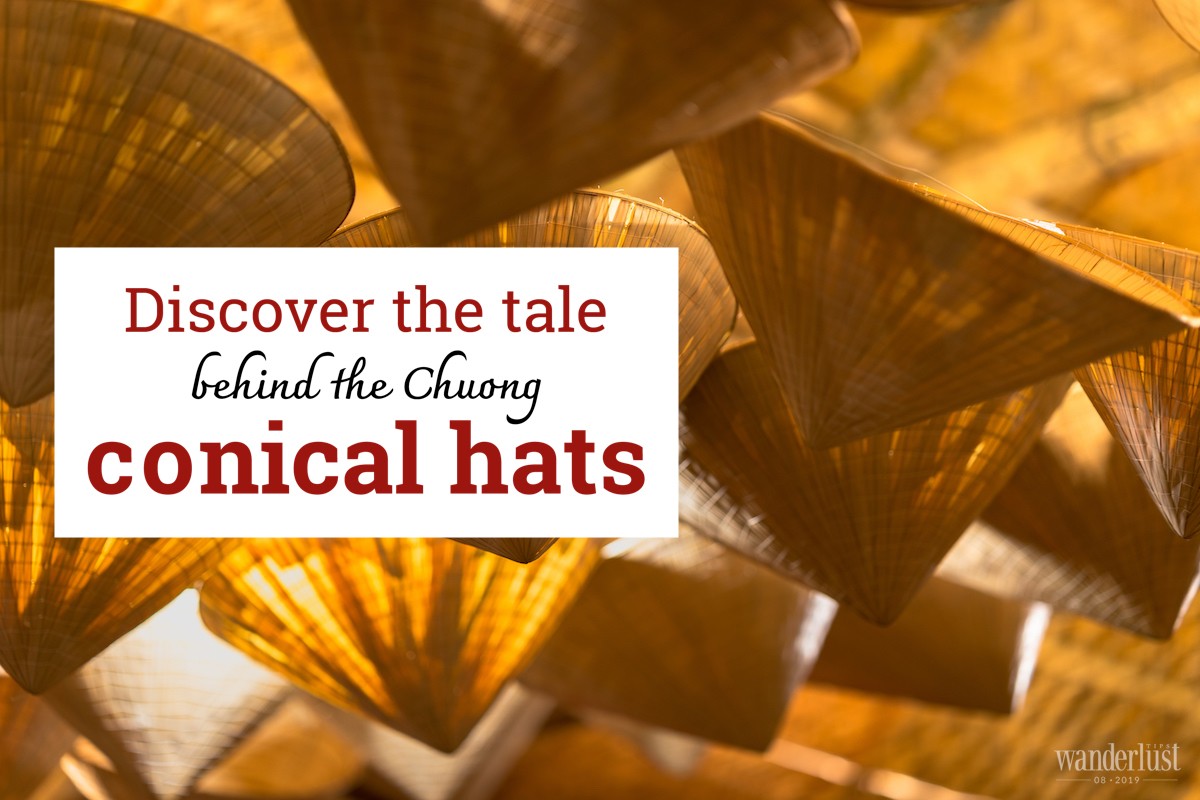
CHUONG MEANING “BELL” IS SIMPLY THE VILLAGE’S NAME, CONICAL HAT MAKING IS ITS TRADITIONAL CRAFT
Located in Phuong Trung Commune, Thanh Oai District, Hanoi, the Chuong village is the largest amongst the villages I used to visit. Due to it not only being the largest area in Thanh Oai District but also it is the only commune of Phuong Trung, it is said that Chuong is the only place that is “both a village and a commune” as according to administrative structure, a commune is an amalgamation of many villages.
According to the local people of the Chuong village, there is a phrase that “Bureaucracy comes first and sewing the conical hats is second”. Thus insinuating that making the hats is as much of an honour as becoming a dignitary or government official.
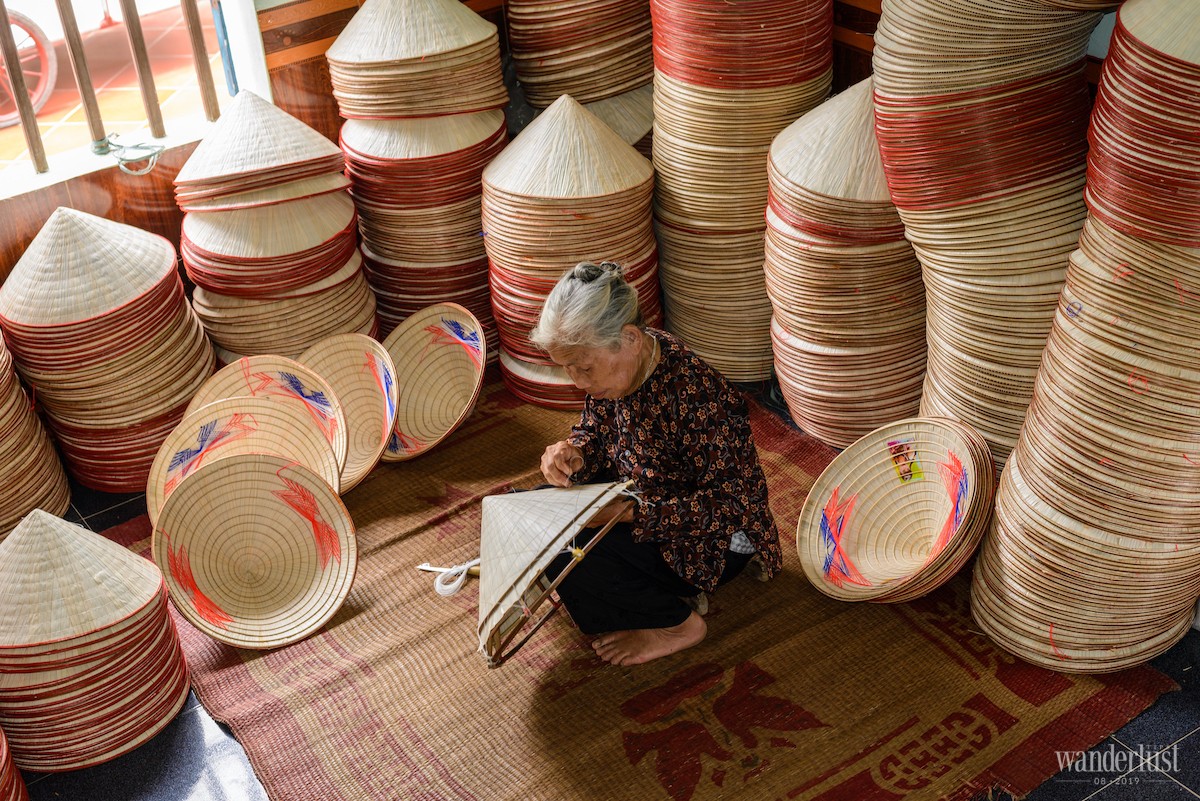
The Chuong villagers do not necessarily know about the origins of conical hat making, they simply pass on their expertise to generations to come. In the past, the villagers made many types of ancient conical hats such as three-ring hats, flat palm hats with fringes, Muoi hats and pineapple conical hats. The village’s hats are famed for their idyllic beauty and are in fact sold everywhere. This is a product fit for the queens and princesses of the imperial palace. However, conical hat makers also have difficulty finding a better business method. In the 1920s, artisan Hai Cat was the very first to bring Xuan Kieu hats (or Ba Don hats) to the village to produce and replace the ancient hats. Hence, the revival of Chuong hats after many hard years where it felt that they would never make another hat again.
The Chuong villagers have been through many ups and downs with their conical hat making. It is indisputable that they would not exist today without all of the hat-making over the years. The village crop yield was not sufficient to provide for all family members, therefore, hat making became the main occupation. In the Chuong village, hat making is a family affair as each generation is in the know. Everyone is involved, with five-year-olds straightening palm leaves and six-year-olds needling hats and even 80-year-olds can still make hats if their eyes are still sharp and their hands are still fast. For the villagers, sewing the hats was an ancient tradition and they worked all hours until tiredness crept in and they could sew no more.
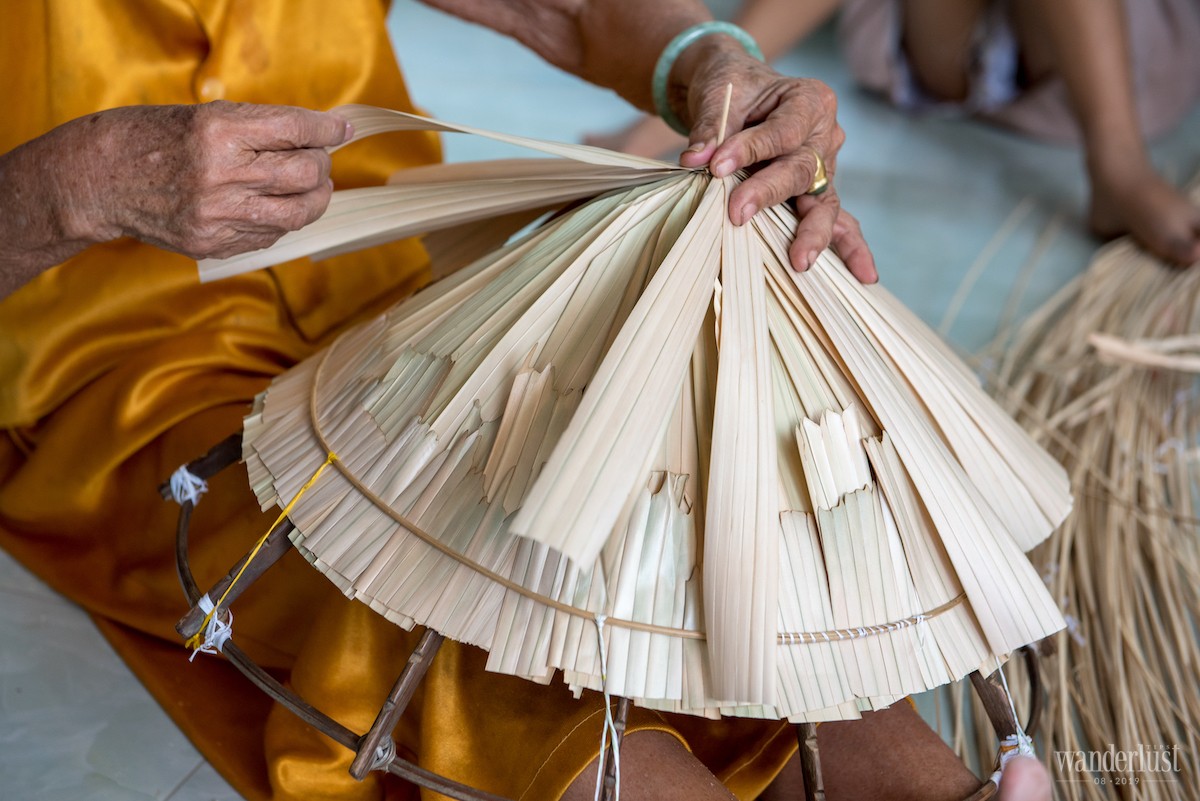
During the harvest, people make the most of the opportunity to make hats in the evening. Though, from July to September, with children on summer holiday and adults having a break from farming, they work all day making hats. Every family in the village concentrates on making hats. They work constantly until the Kitchen Gods’ Day and when the village festival ends they will return to their daily grind.
Wandering around the Chuong village, observing the villagers making hats, I felt bizarrely joyful and happy. Whether it is because the hat makers have faced countless difficulties in their lives or just simply because the conical hat has been a national symbol of Vietnam for generations, whatever the reason – there is no hustle and bustle. The hat makers exude peaceful and gentle energy.
THE HATS FILLED WITH AN ENDLESS LOVE
A remarkable feature of the Chuong conical hats is the thickness and durability because there is a layer of spathe between the two layers of palm leaves. In the “most thriving” days of hat making in Chuong village, the villagers only import and take the spathe to the village once per year in the volume of 500 tons. After being bought, the spathe will be dried and put in the kitchen for gradual usage. The spathe is taken from the high mountains of Tan Lac (Hoa Binh) and planted on the mounds and hills by the locals. It takes each spathe about 2 months to grow and fall out. The best time to harvest spathe is at the end of spring / early summer. The standard spathe has a width of around 25cm and a length of 30-40cm. The spathe to make the hats must be old, thin and light. The spathe usually sells in kilograms, one thick kilogram of spathe contains around 60-70 pieces while one thin kilogram of the spathe has nearly 120 pieces. The price ranges from VND35,000 to VND60,000 per kg. The number of hats produced has recently decreased, so the villagers only import around 200-300 tons per year.
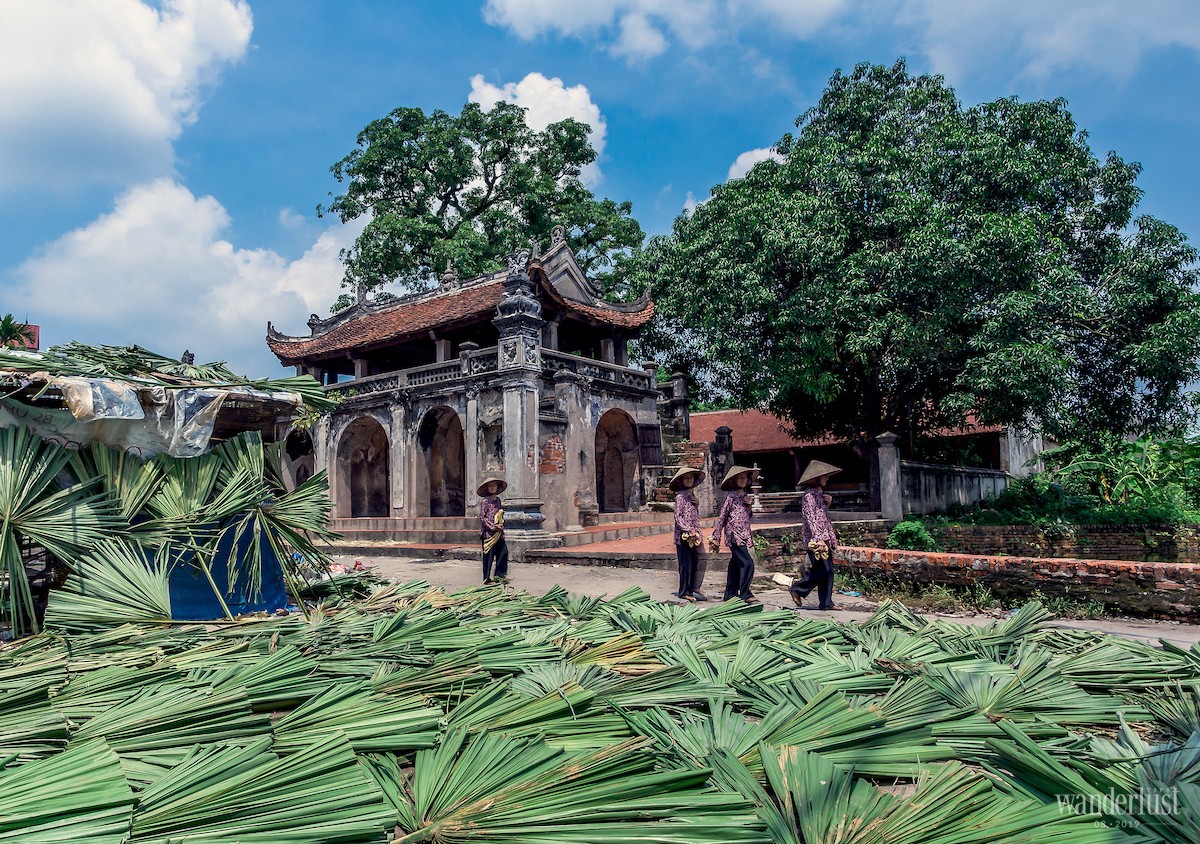
To make a hat, the spathe must be cleaned and cut at both ends, when sewing the hat, the locals will use a wet towel to soften and flatten it then place it over the frame covered by a layer of palm leaves and then sew together by the snells. Thanks to the sharp eyes of the skilful villagers, the spathe is smoothly and beautifully sewn and cut. The spathe layer in the middle helps the hats become steady and durable, so the Chuong hats can be used for 3 years or more.
The Chuong hats are not only famous for their durability but also their beauty, a unique beauty formed through the meticulousness and carefulness of artisans. The spathe makes the hats more durable whilst the outer leaves make the hats look more beautiful. The Chuong villagers use palm leaves and “Lui” leaves to make the hats. Palm leaves are also called lake leaves or old leaves, bought in various provinces such as Phu Tho, Yen Bai or Nghe An. The fresh green leaves are laid to dry in the sun. Afterwards, they are put in a bundle, 10 leaves at a time and left to soak in water for 3 hours before being removed and dried again. The flattened leaves become tough and durable, meaning they will not break when sewing. Compared to the palm leaves, processing the “Lui” leaves requires a few more steps. The leaves are fresh and succulent, so the villagers have to rub them in the sand to start the drying process and then they are smoked to dry out completely.
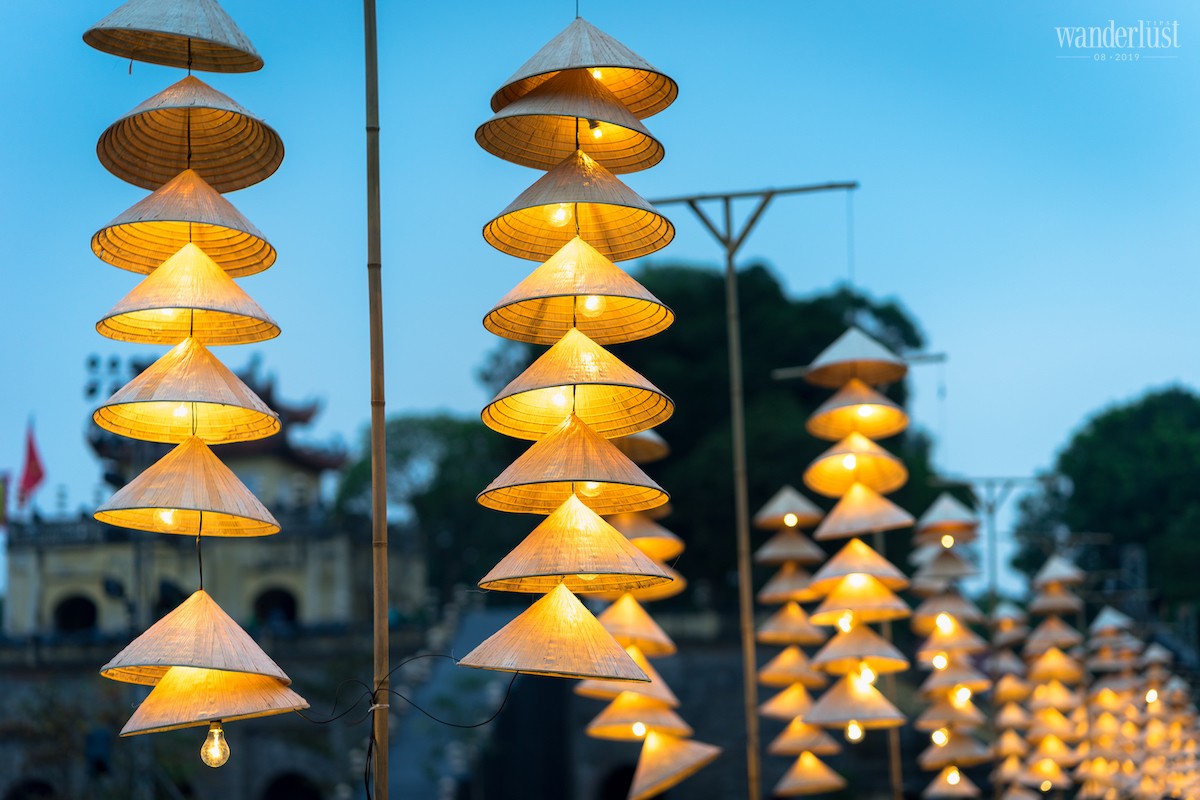
In a time gone by, when there was no electricity, the villagers still sewed the hats under the flickering light of kerosene. Despite working in such conditions, they still preserve the traditional craft for future generations, especially their seams – so accurate and beautiful. The villagers said that they did not sew the hats by looking but that they sewed solely based on their intuitions and feelings, and perhaps the hats’ soul is derived from that. They did not sit down alone to make the hats, they gathered to sew the hats together whilst cracking jokes and telling stories about farming, children and daily life. The hats have brought people together, men and women even got married thanks to their craft. The image of the girls with graceful smiles and ingenious hands working tirelessly had men weak at the knees, so it is thought that the hat is indeed a bridge to connect hearts.
THE ORIGINAL THE CHUONG VILLAGE HATS AND THEIR PROGRESS
When the girls in the Chuong village get married far away, they took the secrets of the traditional craft with them. There is an array of villages famous for making the hats located a stone’s throw from Thanh Oai District, but the original hats derive from the Chuong village.
The villagers still make the hats and they are still as beautiful as ever. The only difference is that the hats are produced in smaller quantities, mainly by the old people or by the elder merchandisers. It is not that the villagers are not interested in making the hats, but times change and these days their lives are burdened with too many other things. The younger generations have more choices for their career; tailors, traders, workers, builders and mechanics. The income from hat making is not sufficient to sustain their lifestyle, but that does not stop the Chuong villagers from looking at the hats with thoughtful and earnest feelings.
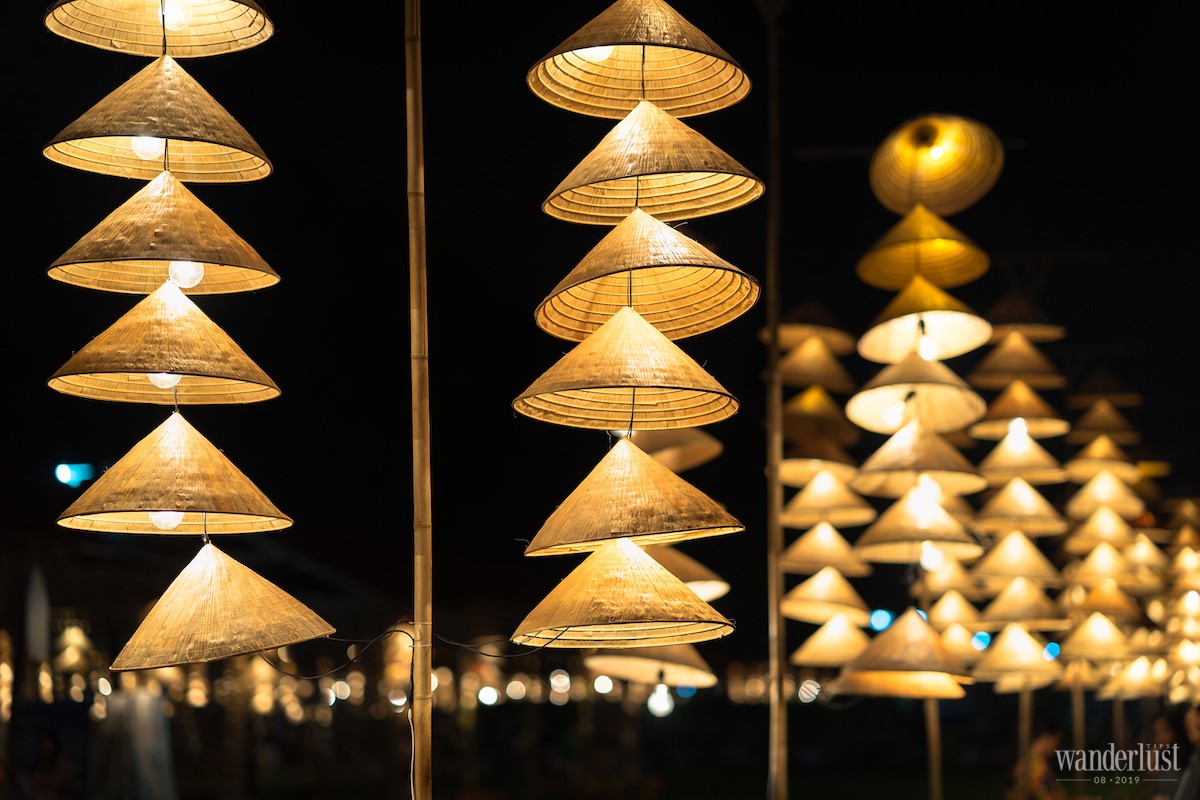
I asked whether the villagers were sad or not, they said yes. But they tried to lighten the mood with a glimmer of hope. The hats were durable and carved on the Dong Son Bronze Drum. They play an important position in the hearts of the villagers such as poem conical hats of Hue, diligent Quang Binh conical hats and even the Chuong conical hats. The residents of the Red River Delta have become accustomed to the image of the Chuong hats over the years. I strongly believe that the symbol will stay in their hearts.
The process of making the hats involves many stages. The frame is one of the pivotal factors. The frame is very durable, talented craftspeople only used one frame during their lifetime of hat-making, there are also the frames that people pass from generation to generation as a way to preserve and maintain their craft as was once said “The curse was put for a thousand years / The dignitary is first, the conical hats are second and they have preserved for a long time” (Nguyen Sinh Thuy).
To bring the conical hat into the 21st century, people have composed more new models for the hats. The flat palm hats with fringes add beautiful details and patterns; Xuan Kieu hats have one more outer layer of silk. In addition to the function of avoiding rain and sun, the hats are also used for decorations and furniture. During my days in the village, I was lucky to witness those who travel to the village to buy 100cm-diameter hats or 2m-flat palm hats with fringes for interior decoration, the villagers were excited. The dance schools and dancers are very keen on buying conical hats in the Chuong village. There were also delegations visiting the village, they sought to study industrial hats and mass production, it is said that these hats could cover the trees. There are also people who are overseas and the Vietnamese want to bring their hat-making craft to other countries.
The villagers were happy, they did not expect to be richer due to the hats and their only hope is that the hat continues to be sought after.
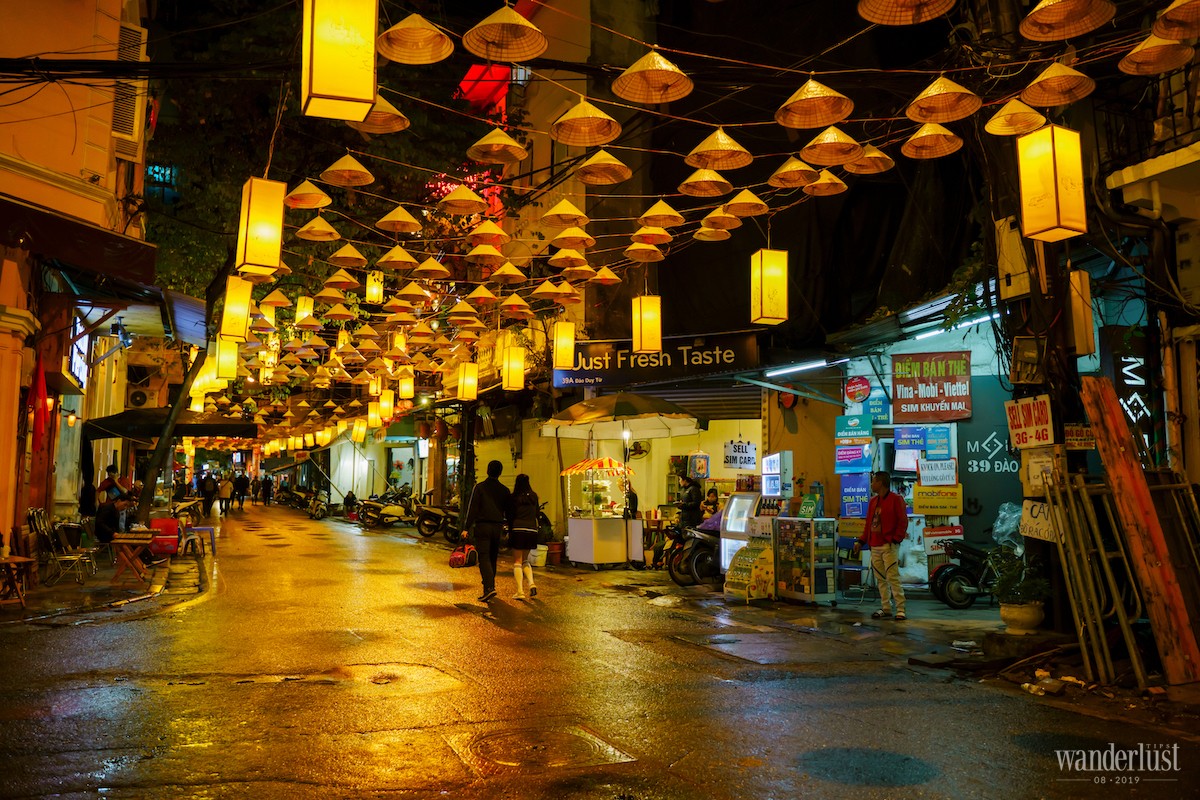
W.TIPS
HOW TO TRAVEL TO THE CHUONG VILLAGE
The road to the Chuong village is quite easy to reach. From the centre of Hanoi City, take the National Highway 6 to Hoa Binh, go to Ba La crossroads, turn left to follow the direction of Huong Pagoda through Kim Bai Town and around 2km on the right, you will see the beautiful Chuong village located on the Day River.
CHUONG FESTIVAL
Chuong Festival was formerly held periodically on January 10th at the temple yard. The celebration includes sacrifices, holy processions, chess games and rice-making. Today, the festival is celebrated on the 10th day of the lunar March with the Hung Kings’ death anniversary to express their gratitude to their ancestors. The festival still retains the spiritual elements as well as traditional beauty, but the cumbersome and sophisticated procedures have been removed.
CHUONG MARKET
In the past, the Chuong market assembled every day, but there were only 6 sessions per month for the conical hat market on the 4th, 10th, 14th, 20th, 24th, and 30th of a lunar month. The market began as early as 5 am and then finished at 9 am. The gathering still occurs today, but the locals mainly sell materials to make the hats, complete hats are usually placed in their homes and people come to pick them up.
SIGHTSEEING ACTIVITIES IN THE CHUONG VILLAGE
>> Take a visit around the village and indulge in the idyllic beauty of the traditional village of Tonkin.
>> Visiting the Chuong market or locals’ homes to learn how to make a beautiful and durable Chuong hat.
>>Additionally, you can stroll along the gentle Day River and visit some places located around 15km away from the Chuong village such as Tram Pagoda or Long Tien Pagoda. For those who love climbing, you can conquer Tram Tu Son Mountain with its gentle terrain and stunningly charming scenery.
Dai Trang | Wanderlust Tips


[…] capital. The smell of gunpowder seems to still linger around the old bullet-riddled walls of the Imperial City. The iconic yellow walls covered by green moss, the romantic purple and pink Bougainvillea in the […]